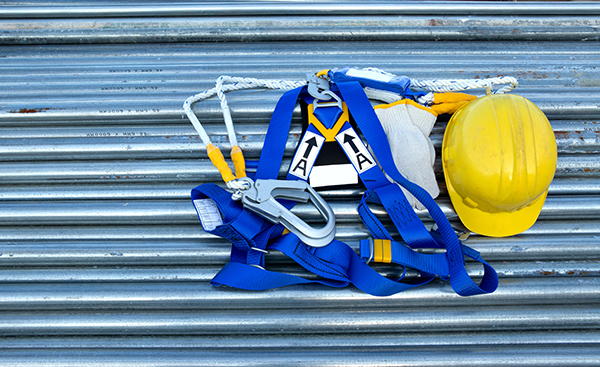Roofing Safety: Best Practices Across the U.S.
Author: Dan Stout | October 30, 2024
It's no secret that roofers and roofing contractors love roofing. Roofers also know firsthand the special satisfaction found in laying in new roofing or repairing an existing roof. But while roofers love roofing, they also recognize it carries some inherent risks.
According to OSHA, falls are the leading cause of death in the construction industry. OSHA reports that in 2020, there were 351 fatal falls on construction sites, accounting for over a third of the total construction fatalities that year. Clearly, understanding roofing safety is an essential skill for any roofing crew.

Roofing Safety Regulations and Guidance
There's no shortage of resources to find information on roofing safety regulations. OSHA provides everything from printable posters and handouts to online and in-person training. You can dive into details of OSHA's standard 1926.501, or you can find more reader-friendly versions in its online eTool.
OSHA has an ongoing fall prevention campaign that provides clear guidance on what kind of training is expected for roofers. And the OSHA brochure, Protecting Roofing Workers, has almost 50 pages of detailed information about what protections are recommended and the best ways to implement them.
Some roofers view OSHA regulations as a hassle. But proper safety is a hassle in the same way that wearing a seat belt is a hassle. Compare the minor headache of buckling up to the potential life-altering consequences of a crash, and the truth is clear: Taking the time to get safety right is a no-brainer.
Oh, and all those posters and handouts we mentioned? Using them to establish a routine of providing workers with safety training goes a long way toward avoiding worksite negligence. Remember that operating a roofing business means you have a legal obligation to provide a safe work environment for everyone under your supervision.
Proper Use and Maintenance of Roofer Safety Equipment
It's not enough to simply hand a worker safety gear and call it a day. Improperly used equipment is about as useful as a hard hat that never leaves the back of your truck. All equipment takes some level of training. After all, even the most skilled craftsperson wasn't born knowing how to swing a hammer or slip on a body harness. Walk through the proper use of equipment and periodically review usage with brief, on-site "toolbox talks."
When reviewing, it may help to group roofing safety equipment into two broad categories: structural equipment and personal protective equipment (PPE).
Structural equipment includes items like ladders, scaffolds and mobile railings. These are structures and devices that don't penetrate the building envelope and are used by multiple workers on the jobsite. PPE is worn by individual workers, and includes hard hats and full-body harness and safety-rope kits.
It's equally important to keep your safety equipment in proper working condition. A safety harness held together by duct tape won't save you from a fall. When safety equipment wears out, replace it. For larger systems, you can perform repairs, but use the proper equipment. If your mobile rail is missing a retainer pin, get a replacement pin — don't look for a quick fix that could end in injury.
Safety Equipment for Maintenance and Inspections
Workers on maintenance assignments sometimes grow lax in their safety protocols. After all, inspecting a roof feels safer than when you're lugging bundles of shingles up a ladder. But that roof is the same height whether you're installing new or walking an inspection.
If you'll frequently walk a roof for regular maintenance, install a walkpad for more secure footing and to protect the roof against excessive foot traffic. (This is especially useful if you think that HVAC techs or other trades might not have the same care and consideration for the roof membrane that you do.)
Personal Care Safety Equipment
Roofers are also exposed to more subtle elements that still pose real risks. Probably the most common of these subtle dangers are intense heat and sunshine.
Sunshine creates glare, which can lead to mistakes or missteps, and extreme heat can cause exhaustion or even worker collapse. Mitigate these dangers with personal care safety equipment like polarized safety glasses; don't forget sunscreen and proper hydration.
In addition, watch your workers. If their behavior seems off in the blazing sun, check on them. Signs such as a throbbing headache, lack of sweating despite heat, flushed skin, and confusion or disorientation can indicate heat illness setting in.
No matter what kind of roofing safety equipment you need, your local Beacon supplier has the gear and institutional know-how to make sure you're staying safe and up to regulation standards.